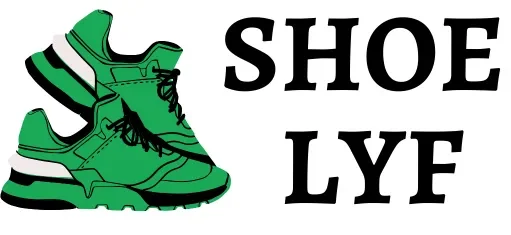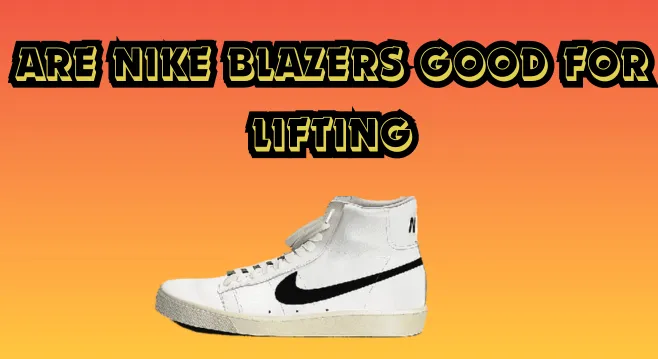If you’re a sneakerhead or a fitness enthusiast, you’ve likely come across the iconic Nike Blazers. These classic kicks have been around since the 70s and have become a staple in many wardrobes.
However, when it comes to lifting weights and hitting the gym, the question arises: are Nike Blazers good for lifting?
Let’s dive into this topic and explore the pros and cons of wearing Nike Blazers for your strength training sessions.
The Design and Construction of Nike Blazers
Before we delve into the lifting aspect, it’s essential to understand the design and construction of Nike Blazers.
Originally released as a basketball shoe, the Nike Blazers feature a canvas or suede upper, a vulcanized rubber sole, and a low-cut profile.
The canvas or suede upper provides a breathable and flexible material that allows your feet to move freely.
However, it lacks the sturdy support and structure typically found in dedicated lifting shoes.The vulcanized rubber sole offers decent traction and durability, but it’s relatively flat and lacks the stability and grip that lifting shoes provide.
The low-cut design allows for excellent ankle mobility, which can be beneficial for certain exercises, but it also means there’s minimal lateral support and stability for heavy lifts.
Factors to Consider
When evaluating whether Nike Blazers are good for lifting, several factors come into play:
Weight and Stability
One of the main concerns with wearing Nike Blazers for lifting is the lack of stability and support for heavy weights.
The flat, flexible sole and low-cut design may not provide the necessary foundation and ankle support for compound exercises like squats or deadlifts, where stability is crucial.
Foot Positioning and Grip
Lifting shoes are often designed with a raised heel and a grippy outsole to facilitate proper foot positioning and grip during lifts.
Nike Blazers lack these features, which can make it more challenging to maintain proper form and balance, especially during exercises like the squat or Olympic lifts.
Foot and Ankle Support
During intense lifting sessions, proper foot and ankle support is essential to prevent injuries and ensure efficient force transfer.
Nike Blazers may not offer the level of support required for heavy lifting, potentially increasing the risk of ankle sprains or other lower-body injuries.
Surface and Traction
While Nike Blazers may provide decent traction on typical gym floors, they may not perform as well on specialized lifting platforms or rough surfaces.
Lifting shoes often have more aggressive tread patterns and durable outsoles designed for better grip on various surfaces.
Alternatives and Modifications
If you’re set on wearing your Nike Blazers for lifting but want to mitigate some of the potential downsides.
There are a few alternatives and modifications to consider:
Insoles or Orthotics
Adding a pair of high-quality insoles or custom orthotics to your Nike Blazers can provide additional support and cushioning, potentially improving their suitability for lifting.
Dedicated Lifting Shoes
If lifting is your primary focus, investing in a pair of dedicated lifting shoes from brands like Nike, Adidas, or Rogue may be a wise choice. These shoes are specifically engineered for stability, grip, and proper foot positioning during lifts.
Cross-Training Shoes
Cross-training shoes from brands like Nike or Reebok can serve as a versatile option, providing a balance of support, stability, and flexibility suitable for various gym activities, including lifting.
Maintaining Your Nike Blazers
Regardless of whether you decide to wear your Nike Blazers for lifting or opt for more suitable alternatives, proper maintenance is crucial.
Here are a few tips to keep your Blazers in good condition:
- Clean them regularly to prevent buildup of sweat and dirt, which can affect their performance and appearance.
- Replace the insoles periodically to maintain cushioning and support.
- Check the outsoles for signs of excessive wear, which can reduce traction and grip.
- Rotate your shoes to extend their lifespan and prevent excessive wear and tear.
Frequently Asked Questions (FAQs)
Can I wear Nike Blazers for running or cardio?
While Nike Blazers can be comfortable for casual wear, they are not designed for high-impact activities like running or intense cardio.
Their lack of cushioning and support can lead to foot and joint pain, as well as an increased risk of injury.
Are Nike Blazers good for weightlifting?
Nike Blazers are not an ideal choice for weightlifting, especially for compound exercises like squats and deadlifts.
Their flat, flexible soles and low-cut design may not provide the necessary stability, support, and grip required for heavy lifts.
Can I wear Nike Blazers for CrossFit workouts?
CrossFit workouts often involve a combination of weightlifting, plyometrics, and other high-intensity movements.
While Nike Blazers may be suitable for some aspects of CrossFit, they may not offer the optimal support and stability for intense lifting or jumping movements.
Are Nike Blazers good for walking or casual wear?
Yes, Nike Blazers are an excellent choice for walking or casual wear. Their comfortable and stylish design, combined with their lightweight and breathable construction, make them a popular option for everyday activities.
Can I wear Nike Blazers for basketball?
Although Nike Blazers were originally designed as a basketball shoe, they may not provide the same level of support, traction, and cushioning as modern basketball shoes.
If you plan to play basketball regularly, it’s recommended to invest in shoes specifically designed for the sport.
conclusion
In conclusion, while Nike Blazers are iconic and versatile sneakers, their suitability for lifting weights depends on various factors, such as the intensity of your workouts, the exercises you perform, and your personal preferences. For casual gym sessions or light lifting, Nike Blazers may be a comfortable option.
However, for serious weightlifting and compound exercises, it’s advisable to consider dedicated lifting shoes or cross-training shoes that offer better stability, support, and grip.
Ultimately, listening to your body and prioritizing safety and proper form should be the guiding principles when choosing the right footwear for your lifting routine.

